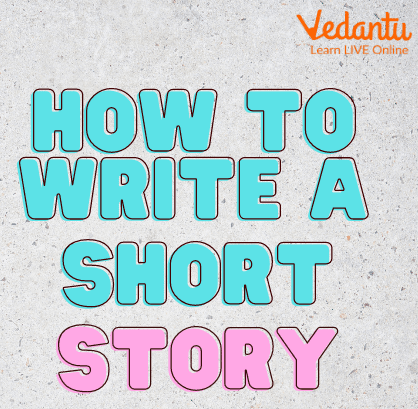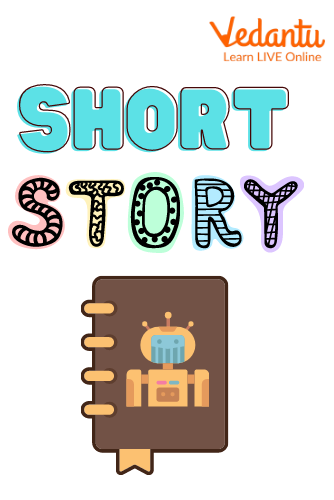




An Easy Guide for Kids on How to Write a Story Step-by-Step
Short stories can be equally powerful and moving as lengthier works of fiction for sure. Some argue that this form can be considerably more effective in light of the fact that short stories convey their central message in a single, deep hit.
If a novel is like lighting up a room using all the house lights, then at that point, a short story is like using a flashlight to illuminate a hidden corner. If you wish to write a short story and are looking for a comprehensive guide, your search ends here. Keep reading to find a step-by-step guide on how to write a short story.

How to Write a Short Story?
What is a Short Story?
As the productive writer, short story, and comic book writer Neil Gaiman says: "Short stories are small windows into other worlds and different personalities and different dreams. They're ventures you can make to the most distant side of the universe and still be back in time for dinner."
Short stories are independent works of prose fiction whose capability is to give a moral, catch a moment, or bring out a specific state of mind.

A Diary
Short stories are most of the time more engaging, as every one of the components inside — plot, character, pacing, story structure, etc. — should cooperate towards this common goal.
Most Effective Method to Write a Short Story in 5 Steps
Follow this step-by-step guide for writing a great short story in just 5 easy steps.
1. Pick the Mood you need to Evoke: This is the feeling or emotion you need to provide for your readers, and what every one of the components in your short story will cooperate to accomplish. What kind of story would you like to say — and why?
2. Start with a Strong Opening: Due to the limitations of the short story format, you will not have a ton of space for exposition. To get around this, consider beginning your story in media res — a writerly practice that implies opening in the activity and filling in details later. This takes you directly to your important scene.
3. Build your Story, Remembering that you just have a Specific Number of Words: Try not to sit around idly. All that is included in the short story should be vital. Read and re-read each sentence and ask yourself: does it truly should be there? Does it fill the more significant need of enlightening your story's mood? As Edgar Allan Poe once said: "A short story should have a single mood and each sentence should work toward it."
4. Land the Ending: The ending forms the key moment of the story. While writing the ending of your short story, focus on the mood you're attempting to make and ask yourself: what might be the most fulfilling way for the ending to capture this mood? Keep in mind, a short story is still a story, and that implies the plot needs to make sense, and nothing should be excessively self-evident.
5. Edit, Edit, Edit: Invest some energy away from your story, and return later with a couple of an open-minded perspective.
A Short Exercise!
Answer any of the questions below as briefly as possible, writing down your first reaction. Then, at that point, set a clock for 60 seconds. Use one of your solutions to write the opening of a short story — one paragraph or more.
Then, reset the clock for 30 minutes and finish the story. You don't have much time, so continue writing. Try not to stress over specialty or structure. Write until the clock stops. Furthermore, remember this advice: you can begin a short story anytime in the narrative.
1. What was the most humiliating thing you've experienced in the past few years?
2. When was the last time you cried, and what was the reason for it?
3. What stunned you such that you were speechless?
4. What was the absolute best or worst moment of your childhood?
5. Have you fantasised about revenge recently? Against whom?
Conclusion
This was all about a short and comprehensive guide to write a short story, discussed in 5 simple steps. Do practise the exercise given above and see the outcome for yourself. Remember, to write a good short story, you have to read as many as possible and also practise writing to enhance your writing skills.
FAQs on How to Write a Short Story Step by Step: A Simple Guide
1. What makes a short story interesting?
Characters are what makes a short story interesting. Kurt Vonnegut said that your short story should have "no less than one person (your reader) can root for." He additionally said, "Each character should need something." Among the plenty of writing guidance Vonnegut brings to the table, these two points about characters are among my top picks.
Plot is another aspect that enhances the readability of your story. It would be ideal for the plot to simply just happen, right? Like, we start with a thought, add a few occasions around that thought, work the characters into individuals we can see and feel for, and refine the text until the story is finished. An interesting plot with twists and turns improved reader engagement with content.
2. How many words should preferably be there in a short story ?
A regular short story has a word count of anywhere between 1,000 words to 5,000 words, despite the fact that usually, there are exemptions to the rule. Streak fiction is a type of creative writing that can have as few as five words, while there is a hazy situation between short stories and novellas (which are normally 30,000 words or more). The word-count roof is fairly fuzzy, in any case, with many significant writing prizes and magazines requesting submissions of something like 7,500 words.









